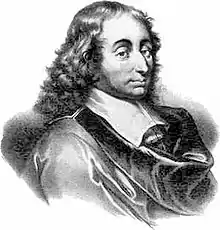PascalABC.NET
PascalABC.NET is a Pascal programming language that implements classic Pascal, most Delphi language features, as well as a number of their own extensions. It is implemented on the .NET Framework platform and contains all the modern language features: classes, operator overloading, interfaces, exception handling, generic classes and routines, garbage collection, lambda expressions, parallel programming tools (OpenMP only as of 2016).
| Paradigm | Multi-paradigm: procedural, functional, object-oriented, generic |
|---|---|
| Designed by | S.S. Mikhalkovich, Ivan Bondarev, A.V. Tkachuk, S.O. Ivanov |
| First appeared | 2002 |
| Stable release | 3.6.0.2330
/ 30 January 2020 |
| Typing discipline | Static, partially inferred |
| Implementation language | PascalABC.NET |
| OS | Cross-platform |
| License | LGPLv3 |
| Filename extensions | .pas |
| Website | pascalabc |
| Influenced by | |
| Delphi, Pascal, C#, Python | |
PascalABC.NET is also a simple and powerful integrated development environment with integrated debugger, IntelliSense system, form designer, code templates and code auto-formatting. Command-line PascalABC.NET compiler is also available on Linux and MacOS (under Mono).[1]
PascalABC.NET is popular in Russian schools and universities. In Southern Federal University, it is used as the main language for teaching students of Information technology in the course "Fundamentals of programming" and for teaching children in one of the largest computer schools in Russia.
Key features of PascalABC.NET
Pascal language extensions
- Operators
+= -= *= /= - in-block variable definitions
- Variable declaration in
forloop header - Variable declaration with initialization (
var n: integer := 10;) - Variable type deduction (
var x := 1;) foreach- Routines with a variable number of parameters
setof any type (set of integer)- Methods in records
- Methods defined in class declaration
- Simplified syntax of units
- Keyword
new(invoking a constructor) - Field initializers
- Operator overloading
- Static constructors
- Directives OpenMP
- case for strings
- function type syntax T->T
- tuple type syntax (T1,T2)
- yield and yield sequence
- pattern matching
System units
Most units are focused on education:
- Raster graphics units GraphABC (based on Windows Forms), GraphWPF (based on WPF)
- Vector graphics units ABCObjects (based on Windows Forms), WPFObjects (based on WPF)
- 3D graphics & animation unit Graph3D (based on the Helix Toolkit library)
- Unit FormsABC to create simple windows application without form designer
- Units-executors Robot and Drawman (school computer science)
Samples
1. Swap the first and second halves of an array
begin
var a := ArrGen(10,i->2*i+1);
a.Println;
Assert(a.Length mod 2 = 0);
var n := a.Length div 2;
a := a[n:] + a[:n];
a.Println;
end.
2. 100!
begin
var p: BigInteger := 1;
for var i:=1 to 100 do
p := p * i;
Println(p);
end.
3. Greater common divisor of two integers
begin
var (a, b) := ReadInteger2;
while b > 0 do
(a, b) := (b, a mod b);
var GCD := Abs(a);
GCD.Print;
end.
4. Display all Fibonacci numbers less than 1000
begin
SeqWhile(1,1,(x,y)->x+y,x->x<1000).Print;
end.
5. Word frequence dictionary for a file
begin
var d := new Dictionary<string,integer>;
foreach var s in ReadLines('words.txt') do
foreach var word in s.ToWords do
d[word] := d.Get(word) + 1;
d.PrintLines;
end.
5а. Word frequency dictionary for a file. Solution in functional style
begin
ReadLines('words.txt').SelectMany(s->s.ToWords).GroupBy(v->v).EachCount.PrintLines;
end.
6. Parallel matrix multiplication using OpenMP directives
procedure Mult(a,b,c: array [,] of real; n: integer);
begin
{$omp parallel for}
for var i:=0 to n-1 do
for var j:=0 to n-1 do
begin
var cc := 0.0;
for var l:=0 to n-1 do
cc += a[i,l]*b[l,j];
c[i,j] := cc;
end;
end;
const n = 1000;
begin
var a := MatrixRandomReal(n,n,1,1.1);
var b := MatrixRandomReal(n,n,1,1.1);
var c := new real[n,n];
Mult(a,b,c,n);
Println(MillisecondsDelta/1000);
end.
